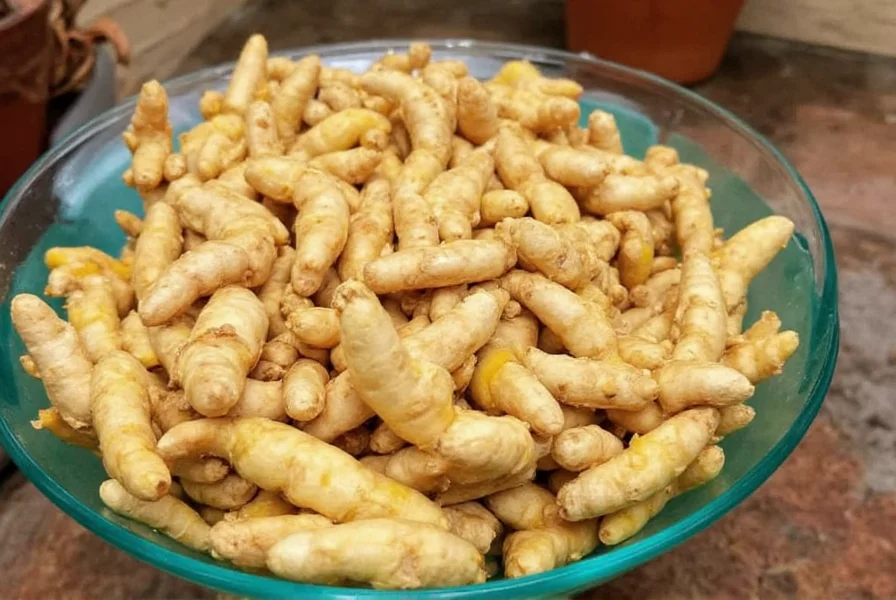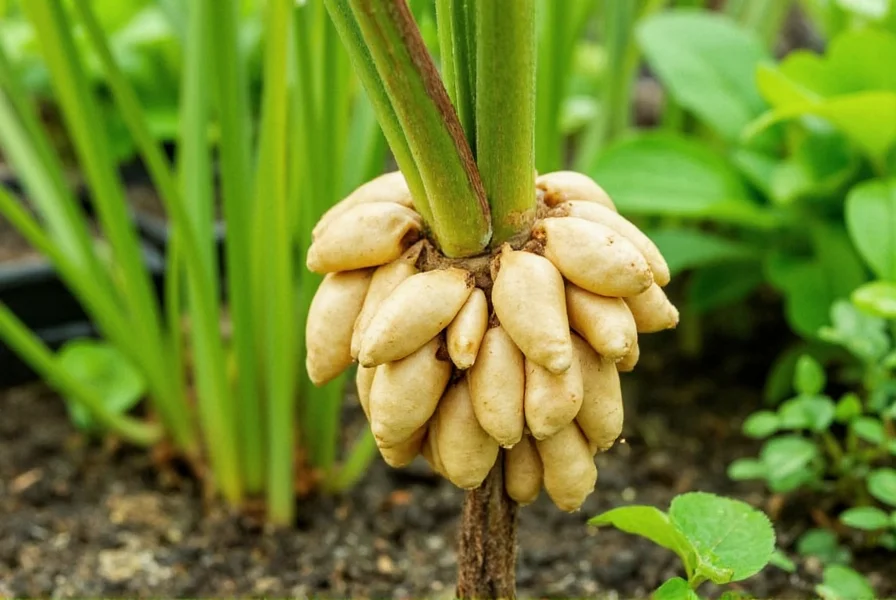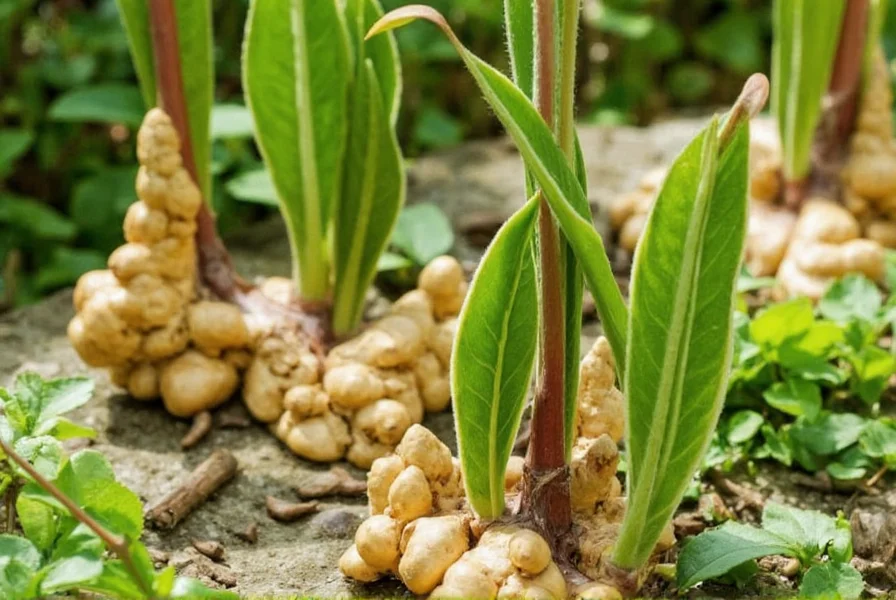Growing your own ginger at home offers fresh, organic spice right from your garden or windowsill. This tropical rhizome, scientifically known as Zingiber officinale, has been cultivated for thousands of years across Asia and has become increasingly popular among home gardeners seeking to expand their edible plant collection. Unlike many herbs that require constant attention, ginger gardening provides a rewarding experience with relatively low maintenance once established.
Understanding Ginger Plant Characteristics
Ginger isn't actually a root but a rhizome—a horizontal underground stem that produces roots and shoots. This distinction matters for successful ginger gardening because it affects how the plant grows and what conditions it needs. The plant grows to about 2-3 feet tall with narrow green leaves and occasionally produces yellow-green flowers.
When selecting ginger for home cultivation, look for plump, firm rhizomes with multiple 'eyes' or growth buds. Grocery store ginger can work, but may have been treated with growth inhibitors. For best results in ginger gardening, source organic ginger from a nursery or specialty supplier that hasn't been chemically treated.
Optimal Conditions for Successful Ginger Gardening
Ginger thrives in warm, humid environments similar to its native tropical habitats. The ideal temperature range for growing ginger is between 71-77°F (22-25°C). While ginger can tolerate temperatures as low as 50°F (10°C), growth will significantly slow below 60°F (15°C).
| Condition | Ideal Range | Tips for Home Gardeners |
|---|---|---|
| Temperature | 71-77°F (22-25°C) | Grow indoors in colder climates; use heating mats for seedlings |
| Soil pH | 5.5-6.5 | Mix in compost to lower pH if needed |
| Light | Partial shade (2-5 hours sun) | East-facing windows work well for indoor growing |
| Water | Consistently moist | Water when top inch of soil feels dry |
Step-by-Step Guide to Planting Ginger
Follow these steps for successful ginger gardening from rhizome to harvest:
- Prepare the rhizomes: Soak store-bought ginger in water overnight to remove potential growth inhibitors. Cut sections with at least one eye per piece.
- Choose containers: Use pots at least 12 inches deep with drainage holes. Ginger gardening in containers works well for indoor growing or colder climates.
- Create ideal soil mix: Combine equal parts potting soil, compost, and perlite for optimal drainage and nutrient content.
- Plant properly: Place rhizome pieces horizontally with eyes facing up, covering with 1-2 inches of soil.
- Water carefully: Keep soil consistently moist but never soggy during the growing season.
- Provide proper light: Position in partial shade—morning sun with afternoon shade works best for outdoor ginger gardening.

Essential Care for Healthy Ginger Plants
Proper care makes the difference between mediocre and abundant ginger harvests. During the active growing season (spring through summer), feed your ginger plants every 4-6 weeks with a balanced organic fertilizer. Ginger gardening requires consistent moisture, but overwatering leads to rot—aim for soil that feels like a damp sponge.
As your ginger plants grow, they'll benefit from a 2-3 inch layer of organic mulch to maintain moisture and temperature. In container ginger gardening, watch for roots emerging from drainage holes, which indicates it's time to repot into a larger container.
Harvesting Your Homegrown Ginger
Most ginger varieties reach maturity 8-10 months after planting. The clearest sign that your ginger is ready for harvest is when the leaves turn yellow and begin to die back. For continuous harvest, you can practice 'partial harvesting' by carefully digging around the edges of the plant and removing only what you need, leaving the main plant intact to continue growing.
When harvesting ginger completely, stop watering 1-2 weeks before harvest to allow the rhizomes to mature. Gently dig up the entire plant, being careful not to damage the delicate rhizomes. Clean off excess soil, but avoid washing with water—simply brush off dirt and allow to air dry for a few days before storing.

Troubleshooting Common Ginger Gardening Problems
Even with proper care, ginger gardeners may encounter challenges. Yellowing leaves often indicate overwatering or poor drainage—adjust your watering schedule and ensure your soil mix has adequate drainage. If leaves develop brown spots, this typically signals a fungal issue that can be addressed with neem oil spray.
Rhizome rot is the most serious problem in ginger gardening, usually caused by waterlogged soil. Prevention is key—use well-draining soil and avoid letting plants sit in standing water. For pest control, watch for aphids and spider mites, which can be managed with insecticidal soap or by introducing beneficial insects like ladybugs.
Storing and Using Your Homegrown Ginger
After harvesting, store ginger rhizomes in a cool, dark place with good air circulation. Properly stored ginger can last 2-3 weeks at room temperature or up to 3 weeks refrigerated in a paper bag. For longer storage, freeze ginger—simply peel, slice, and store in an airtight container.
Fresh homegrown ginger offers superior flavor compared to store-bought varieties. Use it in teas, stir-fries, baked goods, or preserve it in vinegar or syrup. The young shoots and leaves are also edible and make a delicious addition to salads or as a garnish.
Frequently Asked Questions About Ginger Gardening
How long does it take to grow ginger from planting to harvest?
Ginger typically takes 8-10 months to reach full maturity from planting. You can begin harvesting small amounts after 4-5 months for 'baby ginger,' but for maximum yield and flavor, wait until the leaves yellow and die back naturally at 8-10 months.
Can I grow ginger indoors year-round?
Yes, ginger grows well indoors year-round with proper conditions. Use a container at least 12 inches deep with drainage, place in a location with bright, indirect light (east-facing windows work well), maintain temperatures between 71-77°F (22-25°C), and keep humidity levels high by misting regularly or using a humidity tray.
Why are my ginger plant leaves turning yellow?
Yellowing leaves can indicate several issues in ginger gardening. If it happens early in the growing season, it's likely overwatering or poor drainage. If it occurs after 8 months of growth, it's a natural sign that your ginger is ready for harvest. Check soil moisture—ginger needs consistently moist but not soggy soil.
What's the best soil mix for growing ginger in containers?
The ideal soil mix for container ginger gardening consists of equal parts potting soil, compost, and perlite or coarse sand. This creates a loose, well-draining medium with a slightly acidic pH (5.5-6.5) that mimics ginger's natural tropical environment while preventing rhizome rot.
How do I prevent ginger rhizomes from rotting in the ground?
To prevent rot in ginger gardening, ensure excellent drainage by planting in raised beds or containers with drainage holes. Use a soil mix with plenty of organic matter and perlite. Water only when the top inch of soil feels dry, and reduce watering as harvest time approaches. In rainy climates, consider growing ginger under cover or in containers you can move indoors during heavy rains.











 浙公网安备
33010002000092号
浙公网安备
33010002000092号 浙B2-20120091-4
浙B2-20120091-4